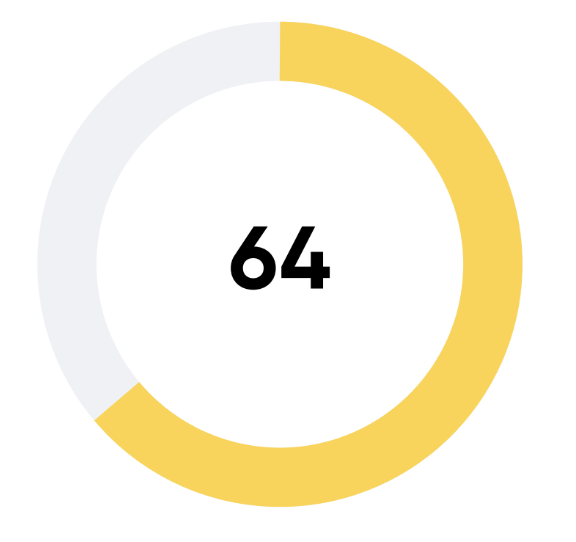The CMC Evolution - From PPI Through Motor Finance to Banking Products
Read Time 6 mins | Written by: Andy Smith
-1.png)

Amplifi Intelligibility Score
This content is likely to be understood by a reader who has a GCSE (A*-C) education or equivalent. This equates to around 58 - 72% of the UK adult population.*
The Claims Management Company (CMC) industrial complex stands as one of the most significant structural shifts in UK financial services over the past two decades.
What began as a cottage industry feeding off PPI compensation has evolved into a sophisticated complaints generation machine that now drives nearly half of all Financial Ombudsman Service (FOS) cases. Understanding this evolution isn't just of academic interest, it's existential for firms that want to survive the next wave of targeting.
The PPI Foundation: Building a £38 Billion Business Model
The PPI scandal established the template that CMCs still follow today. Over £38 billion in compensation was paid to customers between 2011 and the August 2019 deadline. This remains the largest consumer redress scheme in UK history. But the true genius of the CMC model wasn't in the headline compensation figure, although that is certainly noteworthy, it was in the industrial scale extraction of value from that redress.
The FCA estimated that CMCs extracted over £2 billion specifically from PPI complaints. At typical commission rates CMCs were essentially capturing one-third of consumer redress before it reached affected customers.
The model was and remains devastatingly simple, aggressive marketing campaigns targeting consumer reluctance about complaining directly, coupled with a "no win, no fee" structure that removed consumer risk while guaranteeing CMC profit margins. This approach transformed complaints from individual consumer actions into industrial-scale revenue generation. The £2 billion in CMC revenues from PPI represents a significant regulatory arbitrage and one they will look to repeat.
Motor Finance: Peak CMC Operations
Motor finance complaints now represent the apex of CMC sophistication. The FOS have recorded huge numbers of motor finance complaints, increasing year-on-year. But it's the systemic nature of CMC involvement that reveals the maturation of their model.
Professional representatives now bring around half of all FOS complaints across sectors. This isn't organic growth, it's the result of systematic targeting of the motor finance sector following the 2024 FCA review of discretionary commission arrangements.
The Supreme Court decision in August 2025 and subsequent Court of Appeal rulings have created a legal framework where any commission arrangement without informed customer consent is unlawful. This provides CMCs with a clear liability hook across potentially millions of motor finance agreements dating back years.
The Financial Conduct Authority (FCA) response reveals the scale of the challenge. Their £1 million campaign, launched in September 2025, specifically warns consumers that using CMCs could cost them over 30% of any compensation. They also forced CMCs to amend or withdraw 396 motor finance promotions between January 2024 and August 2025, highlighting systematic mis-selling by professional representatives.
The regulator’s campaign includes partnerships with social media influencers and targets 79% of motor finance customers who are aware they may be owed compensation, with 41% not knowing they can claim directly. This represents a direct regulatory assault on the CMC business model.
Post-Motor Finance: The Banking Products Pivot
With motor finance claims facing systematic regulatory and industry resistance, CMCs are already pivoting to their next target: mainstream banking products. Compliant data reveals this transition is well underway.
Credit card complaints have reached an all-time high. The majority relate to affordability and irresponsible lending claims, with over 85% brought by professional representatives.
Current account complaints similarly hit record levels. Fraud handling complaints and fee/terms disputes are the primary drivers, with professional representatives now accounting for one-third of current account complaints.
So what’s the playbook? CMCs are systematically targeting products with high volume, complex terms, and regulatory pressure points. Consumer Duty's communication requirements create additional vulnerability where terms and conditions transparency can be challenged. In September 2025, the FCA both reminded firms whilst raising the bar on Consumer Understanding, noting Credit Card promotions as a particular concern.
The Professional Representative Revolution
The transformation in complaint patterns reflects a fundamental shift in how complaints are generated and processed. Professional representatives accounted for 46% of all FOS complaints in H2 2024 compared to 22% in H2 2023. But the quality differential is stark: only 25% of complaints brought by professional representatives are upheld versus 37% brought directly by consumers.
This uphold gap reveals the industrial nature of CMC complaint generation. Optimising for volume, not merit, creating a systematic burden on firms and the dispute resolution system. The FOS implementation of fees for CMCs represents recognition that the current model is unsustainable.
The complaints industrial complex is a behemoth that can leave firms struggling in its wake.
Strategic Implications: Beyond Compliance to Survival
The CMC evolution represents more than a complaints management challenge. It represents a systematic threat to business models across financial services. Firms facing CMC targeting experience complaint volumes that can overwhelm traditional complaints handling processes, while generating legal and regulatory risks that extend far beyond individual case outcomes.
The motor finance sector provides a blueprint for CMC targeting: identify regulatory pressure points, exploit legal uncertainty, generate industrial-scale complaint volumes, and extract maximum value through professional fees. Credit cards and current accounts are already experiencing this treatment, with fraud handling and affordability assessments providing the next wave of liability hooks.
Firms must recognise that effective CMC defence requires going beyond traditional complaints management to systemic risk mitigation. This includes proactive terms simplification, enhanced affordability processes, and sophisticated complaint pattern analysis to detect coordinated targeting before it reaches crisis levels.
The £38 billion PPI legacy established the CMC industrial complex. Motor finance complaints are demonstrating its maturation. Banking products represent its next evolution. Firms that treat this as a traditional complaints issue rather than an existential business model threat do so at their considerable peril.
The questions facing financial services leadership aren't about individual complaint handling. It’s about building a robust defence around areas which are open to regulatory pressure points and legal liability hooks. Consumer understanding of complex terms, unwieldy agreements and poor communication will all provide fertile battlegrounds for potential attack. Firms must armour themselves with better weapons than readability to repel the hoards.
The CMC evolution suggests the challenges are growing and some firms may not survive. Those that do will look to evolve how they deal with emerging regulatory issues. Doing what you’ve always done, in the face of obvious environmental changes, is a recipe for extinction.
About Amplifi
🧠 Let’s Make Understanding the Standard
At Amplified Global, our mission is to make financial information understandable and actionable for everyone. If your organisation is exploring ways to strengthen consumer understanding, we would love to share insights and practical approaches. Let’s continue the conversation and ensure targeted support becomes a real force for positive change.
Amplifi Intelligibility Score
*The Amplifi Intelligibility Score is our proprietary measure of how intelligible a piece of content is. Calculated on a scale from 1 to 100, it reflects how easily someone can read, understand, and act on the content. The score draws on a wide range of metrics to provide a rounded view of intelligibility, making it a strong indicator of communication risk and helping teams prioritise which content needs attention
